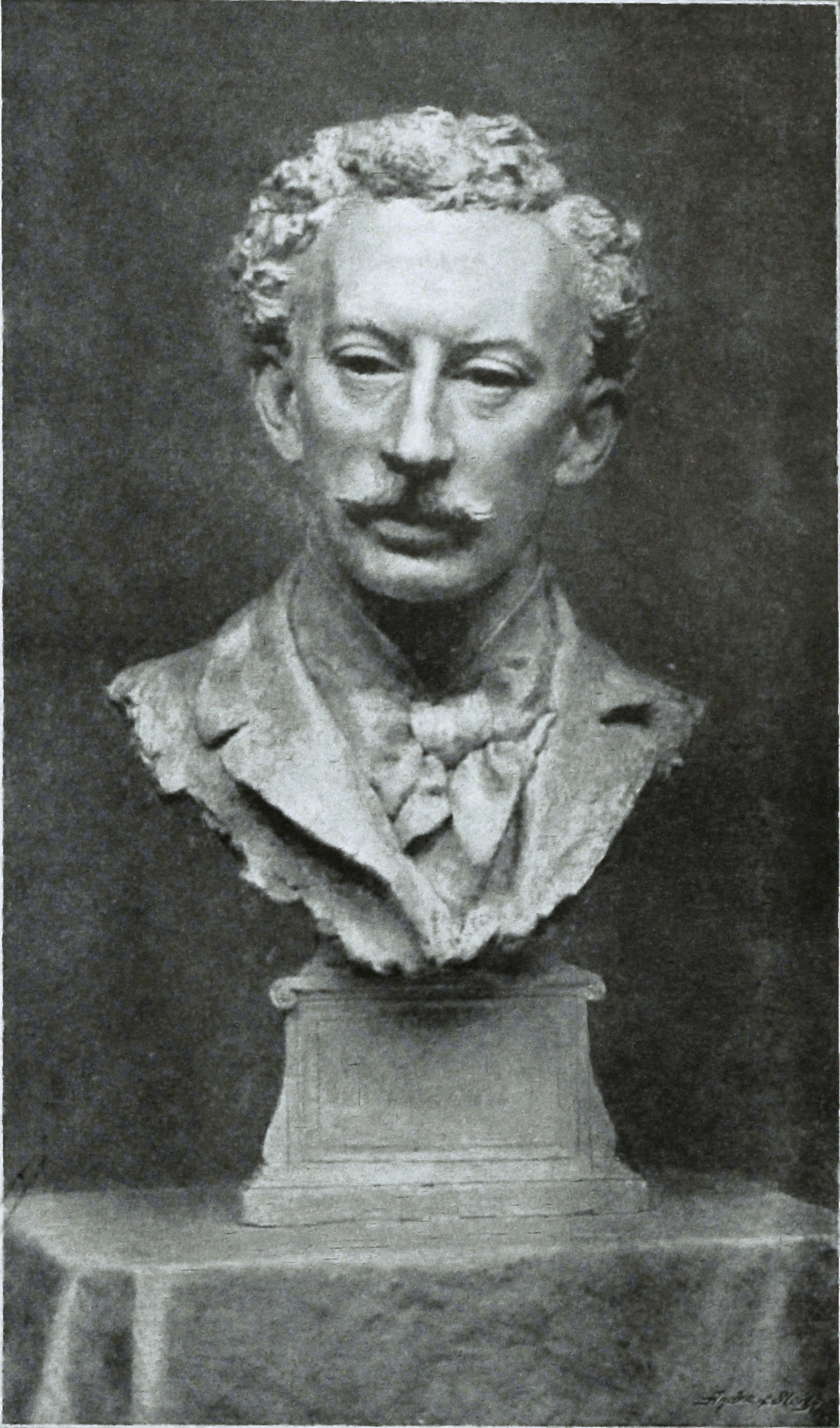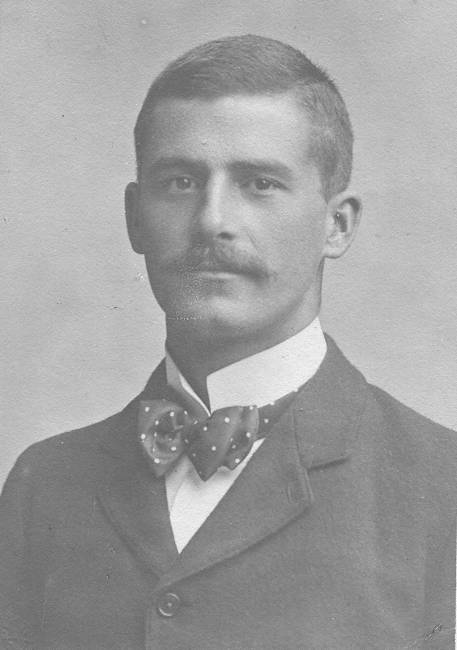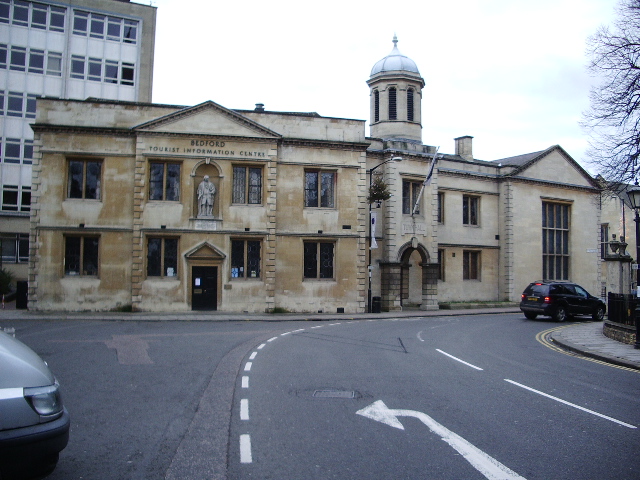|
James Surtees Phillpotts
James Surtees Phillpotts (18 July 1839 – 16 October 1930) was a reforming Headmaster of Bedford School and the author and editor of a number of educational books. Biography Born in Cornwall on 18 July 1839, James Surtees Phillpotts was a grandson of Henry Phillpotts, the well known polemicist and Anglican Bishop of Exeter. William Phillpotts, his father, was Archdeacon of Cornwall and vicar of St Gluvias church, Penryn. His mother Louisa Buller was the sister of James Wentworth Buller M.P. and an aunt of General Sir Redvers Henry Buller. James Phillpotts was educated at Winchester College and at New College, Oxford, where, in accordance with the provisions that existed at that time, he was elected a Fellow on going up in 1858. He won the Stanhope Prize in 1859. He passed his Honour Moderations (Mods) in Classics in 1860 and his Literae Humaniores (Greats) in 1862, achieving a first class in both and thus completing his B.A. degree. Thereupon he immediately proceeded to th ... [...More Info...] [...Related Items...] OR: [Wikipedia] [Google] [Baidu] |
Arthur Hacker
Arthur Hacker ( St Pancras, Middlesex, 25 September 1858 – 12 November 1919 Kensington, London) was an English classicist painter. Biography Hacker was the son of Edward Hacker (1812–1905), a line engraver specialising in animal and sporting prints (who was also for many years the registrar of Births and Deaths for the Kentish Town sub-district of Pancras Registration District, Middlesex). In his art he was most known for painting religious scenes and portraits, and his art was also influenced by his extensive travels in Spain and North Africa. He studied at the Royal Academy between 1876 and 1880, and at the Atelier Bonnat in Paris. He was twice exhibited at the Royal Academy, in 1878 and 1910, and was elected an Academician in 1910. In 1894 he was the subject of a bust by Edward Onslow Ford. An original portrait by Hacker of Sir Alfred Keogh hangs in the RAMC HQ Mess at Millbank, London. In 1902, Hacker built a new house at Heath End, Checkendon, Oxfordshi ... [...More Info...] [...Related Items...] OR: [Wikipedia] [Google] [Baidu] |
Jungfrau
The Jungfrau ( "maiden, virgin"), at is one of the main summits of the Bernese Alps, located between the northern canton of Bern and the southern canton of Valais, halfway between Interlaken and Fiesch. Together with the Eiger and Mönch, the Jungfrau forms a massive wall of mountains overlooking the Bernese Oberland and the Swiss Plateau, one of the most distinctive sights of the Swiss Alps. The summit was first reached on August 3, 1811, by the Meyer brothers of Aarau and two chamois hunters from Valais. The ascent followed a long expedition over the glaciers and high passes of the Bernese Alps. It was not until 1865 that a more direct route on the northern side was opened. The construction of the Jungfrau Railway in the early 20th century, which connects Kleine Scheidegg to the Jungfraujoch, the saddle between the Mönch and the Jungfrau, made the area one of the most-visited places in the Alps. Along with the Aletsch Glacier to the south, the Jungfrau is part of the Jungf ... [...More Info...] [...Related Items...] OR: [Wikipedia] [Google] [Baidu] |
Rivington (publishers)
Rivington, or Rivington's, also called Rivington & Co., was a London-based publishing company founded by Charles Rivington (1688–1742), originally from Derbyshire, and continued by his sons and grandsons. History In 1736 Charles Rivington and a partner called Bettesworth founded a company of booksellers called "The New Conger", rivalling an older firm called "The Conger" that dated from about 1700. From selling books, Rivington moved on to the business of publishing books. In 1741 he published the first volume of Samuel Richardson's novel ''Pamela, or Virtue Rewarded''. Both men were from Derbyshire, and Rivington had persuaded Richardson to write a novel in the form of a correspondence.Septimus Rivington, ''The House of Rivington'' (1894) After his death in 1742, Charles Rivington was succeeded by his two sons, John (1720–1792) and James Rivington (1724–1802). James emigrated to the United States, where he pursued his trade in New York City; John carried on the business on ... [...More Info...] [...Related Items...] OR: [Wikipedia] [Google] [Baidu] |
Longman
Longman, also known as Pearson Longman, is a publishing company founded in London, England, in 1724 and is owned by Pearson PLC. Since 1968, Longman has been used primarily as an imprint by Pearson's Schools business. The Longman brand is also used for the Longman Schools in China and the ''Longman Dictionary''. History Beginnings The Longman company was founded by Thomas Longman (1699 – 18 June 1755), the son of Ezekiel Longman (died 1708), a gentleman of Bristol. Thomas was apprenticed in 1716 to John Osborn, a London bookseller, and at the expiration of his apprenticeship married Osborn's daughter. In August 1724, he purchased the stock and household goods of William Taylor, the first publisher of ''Robinson Crusoe'', for 9s 6d. Taylor's two shops in Paternoster Row, London, were known respectively as the '' Black Swan'' and the ''Ship'', premises at that time having signs rather than numbers, and became the publishing house premises. Longman entered into part ... [...More Info...] [...Related Items...] OR: [Wikipedia] [Google] [Baidu] |
The Pioneer (India)
''The Pioneer'' is an English-language daily newspaper in India. It is published from multiple locations in India, including Delhi. It is the second oldest English-language newspaper in India still in circulation after ''The Times of India''. In 2010, The Pioneer launched its Hindi version in Lucknow. Author Rudyard Kipling (1865-1936), in his early 20s, worked at the newspaper office in Allahabad as an assistant editor from November 1887 to March 1889. In July 1933, ''The Pioneer'' was sold to a syndicate and moved from Allahabad to Lucknow, Uttar Pradesh, at which time the ''Pioneer Mail and India Weekly News'' ceased publication. The newspaper remained a primarily Lucknow-based paper until 1990, when it was purchased by the Thapar Group, under L. M. Thapar, who made it a national newspaper, published from Delhi, Lucknow, Bhubaneswar, Kochi, Bhopal, Chandigarh, Dehradun and Ranchi. Thapar sold the paper to its editor Chandan Mitra in 1998. At that time it had 484 employees. Mi ... [...More Info...] [...Related Items...] OR: [Wikipedia] [Google] [Baidu] |
Brian Surtees Phillpotts
Brian Surtees Phillpotts DSO (1875 – 4 September 1917) was an officer of the Royal Engineers who fought in the First World War and was awarded the Distinguished Service Order. He was killed in action in September 1917. Biography Brian "Broo" Surtees Phillpotts was the second surviving son of James Surtees Phillpotts, the reforming headmaster of Bedford School, and of Marian Hadfield Phillpotts. His sisters included Dame Bertha Surtees Phillpotts, a scholar of Scandinavian studies, and Marjory Surtees Phillpotts, captain of the England Ladies Hockey Team. He was born in 1875 and educated at Bedford School, where he showed an aptitude for craft work including the construction of small boats. He opted for a military career and in 1893 entered the Royal Military Academy, Woolwich (headquarters of the Royal Corps of Engineers), from where he pursued a course at the Royal School of Military Engineering in Chatham. After leaving Chatham he specialised in submarine mining and wa ... [...More Info...] [...Related Items...] OR: [Wikipedia] [Google] [Baidu] |
William Sealy Gosset
William Sealy Gosset (13 June 1876 – 16 October 1937) was an English statistician, chemist and brewer who served as Head Brewer of Guinness and Head Experimental Brewer of Guinness and was a pioneer of modern statistics. He pioneered small sample experimental design and analysis with an economic approach to the logic of uncertainty. Gosset published under the pen name Student and developed most famously Student's t-distribution – originally called Student's "z" – and "Student's test of statistical significance". Life and career Born in Canterbury, England the eldest son of Agnes Sealy Vidal and Colonel Frederic Gosset, R.E. Royal Engineers, Gosset attended Winchester College before matriculating as Winchester Scholar in natural sciences and mathematics at New College, Oxford. Upon graduating in 1899, he joined the brewery of Arthur Guinness & Son in Dublin, Ireland; he spent the rest of his 38-year career at Guinness. The site cites ''Dictionary of Scientific Biograph ... [...More Info...] [...Related Items...] OR: [Wikipedia] [Google] [Baidu] |
Marjory Gosset
Marjory Gosset (27 May 1879 – 12 December 1965) was a noted hockey player in the early years of the 20th century. Birth and education Marjory Surtees Gosset was the third daughter and youngest child of James Surtees Phillpotts and Marian Hadfield Phillpotts née Cordery. Her siblings included the Icelandic scholar Bertha Surtees Phillpotts and World War I hero Brian Surtees Phillpotts. She grew up at Bedford School where her father was headmaster, but was educated at home, to a large extent by her mother. Sporting career Marjory Phillpotts (as she then was) started playing hockey at Bedford in 1896. At that time the standard hockey stick had a rounded face rather than a flat one and the ball had a covering of tightly wound string.''Prominent Lady Hockey Players and Officials'' in ''The Sports Mail'', London, 22 February 1930 In 1899 she joined Bedford Hockey Club and began her sporting career. She played for the Midlands from 1899 to 1903 and for England from 1900 to 1903. In ... [...More Info...] [...Related Items...] OR: [Wikipedia] [Google] [Baidu] |
Bertha Phillpotts
Dame Bertha Surtees Phillpotts (25 October 1877 – 20 January 1932) was an English scholar in Scandinavian languages, literature, history, archaeology and anthropology. Biography Phillpotts was born in Bedford on 25 October 1877. Her father, James Surtees Phillpotts (1839–1930), was headmaster of Bedford School and instrumental in turning it from a relatively obscure grammar school to a top-ranking public school. Her mother, Marian Hadfield Phillpotts (née Cordery; 1843–1925), was a competent linguist. Having received all of her basic education at home, in 1898, Phillpotts won a Pfeiffer Scholarship to Girton College in the University of Cambridge, where she studied medieval and modern languages, Old Norse and Celtic under Hector Munro Chadwick. She graduated in 1901 with First Class honours. She then obtained a Pfeiffer Studentship which enabled her to travel to Iceland and Copenhagen to pursue her research. From 1906 to 1909, she worked as librarian at Girton Colle ... [...More Info...] [...Related Items...] OR: [Wikipedia] [Google] [Baidu] |
Thomas Jex-Blake
Thomas William Jex-Blake (1832–1915) was an Anglican priest and educationalist. He was born on 26 January 1832, the son of lawyer Thomas Jex-Blake and the brother of Sophia Jex-Blake, who was a pioneer in women doctors in the United Kingdom. He was educated at Rugby and University College, Oxford. His career in education began with a school master position at Marlborough, which he left to become assistant master at Rugby. From 1868 to 1874 he was principal of Cheltenham College and from 1874 to 1887 headmaster of Rugby. After this second period at Rugby, his working life solely as an Anglican minister began when he became rector of Alvechurch. In 1891 he was appointed dean of Wells, a post he held for two decades. He died on 2 July 1915. Personal life He married Henrietta Cordery in 1857. They had nine daughters and two sons, among them educationalists Katharine Jex-Blake and Henrietta Jex-Blake, and doctors Bertha Jex-Blake and Arthur John Jex-Blake. References ... [...More Info...] [...Related Items...] OR: [Wikipedia] [Google] [Baidu] |
Hampstead
Hampstead () is an area in London, which lies northwest of Charing Cross, and extends from Watling Street, the A5 road (Roman Watling Street) to Hampstead Heath, a large, hilly expanse of parkland. The area forms the northwest part of the London Borough of Camden, a borough in Inner London which for the purposes of the London Plan is designated as part of Central London. Hampstead is known for its intellectual, liberal, artistic, musical, and literary associations. It has some of the most expensive housing in the London area. Hampstead has more millionaires within its boundaries than any other area of the United Kingdom.Wade, David"Whatever happened to Hampstead Man?" ''The Daily Telegraph'', 8 May 2004 (retrieved 3 March 2016). History Toponymy The name comes from the Old English, Anglo-Saxon words ''ham'' and ''stede'', which means, and is a cognate of, the Modern English "homestead". To 1900 Early records of Hampstead can be found in a grant by King Ethelred the Unread ... [...More Info...] [...Related Items...] OR: [Wikipedia] [Google] [Baidu] |
Bedford
Bedford is a market town in Bedfordshire, England. At the 2011 Census, the population of the Bedford built-up area (including Biddenham and Kempston) was 106,940, making it the second-largest settlement in Bedfordshire, behind Luton, whilst the Borough of Bedford had a population of 157,479. Bedford is also the historic county town of Bedfordshire. Bedford was founded at a ford on the River Great Ouse and is thought to have been the burial place of King Offa of Mercia, who is remembered for building Offa's Dyke on the Welsh border. Bedford Castle was built by Henry I of England, Henry I, although it was destroyed in 1224. Bedford was granted borough status in 1165 and has been represented in Parliament since 1265. It is known for its large Italians in the United Kingdom, population of Italian descent. History The name of the town is believed to derive from the name of a Saxon chief called Beda, and a Ford (crossing), ford crossing the River Great Ouse. Bedford was a marke ... [...More Info...] [...Related Items...] OR: [Wikipedia] [Google] [Baidu] |








